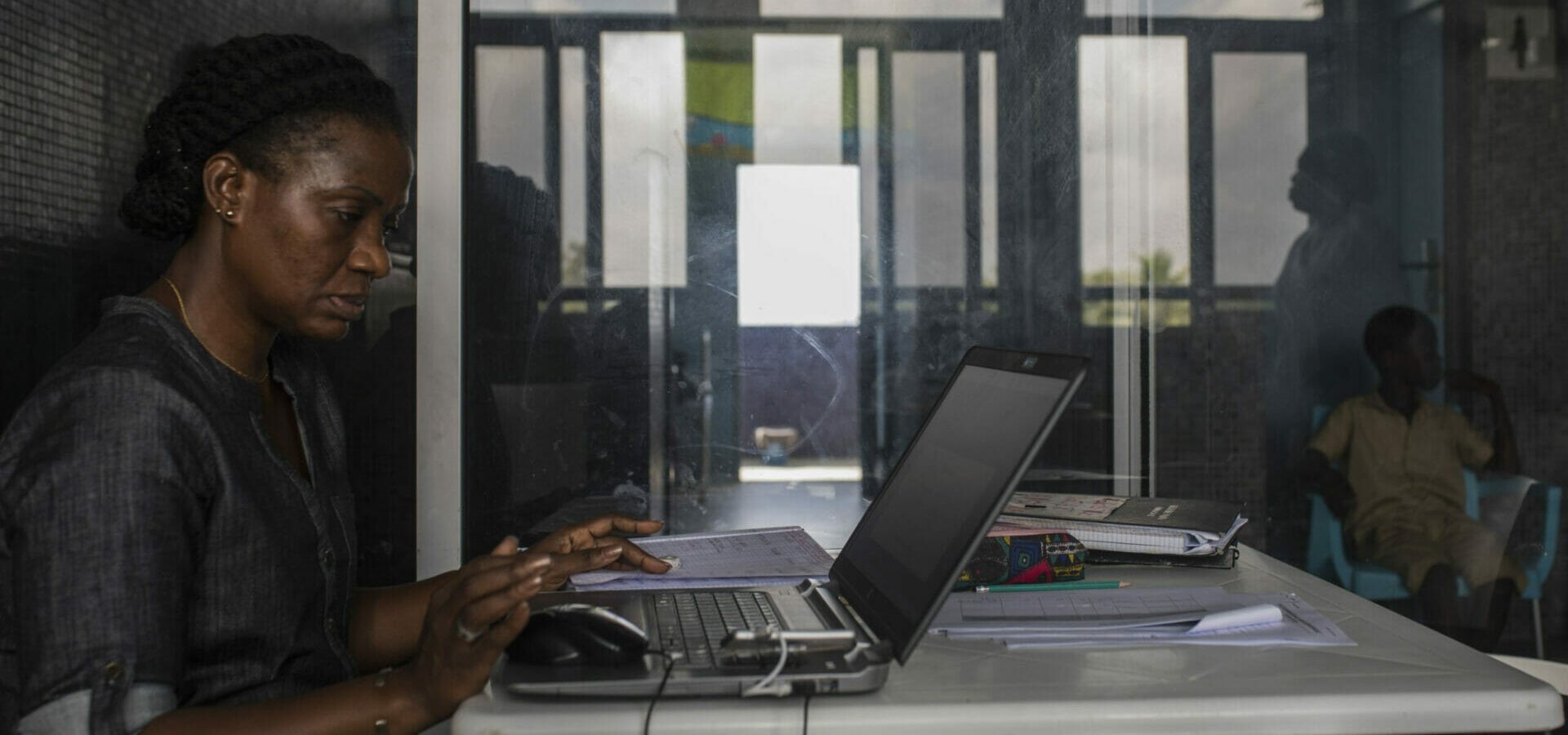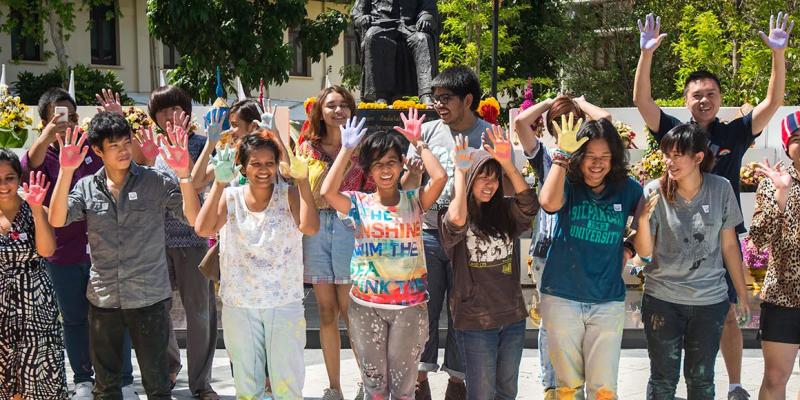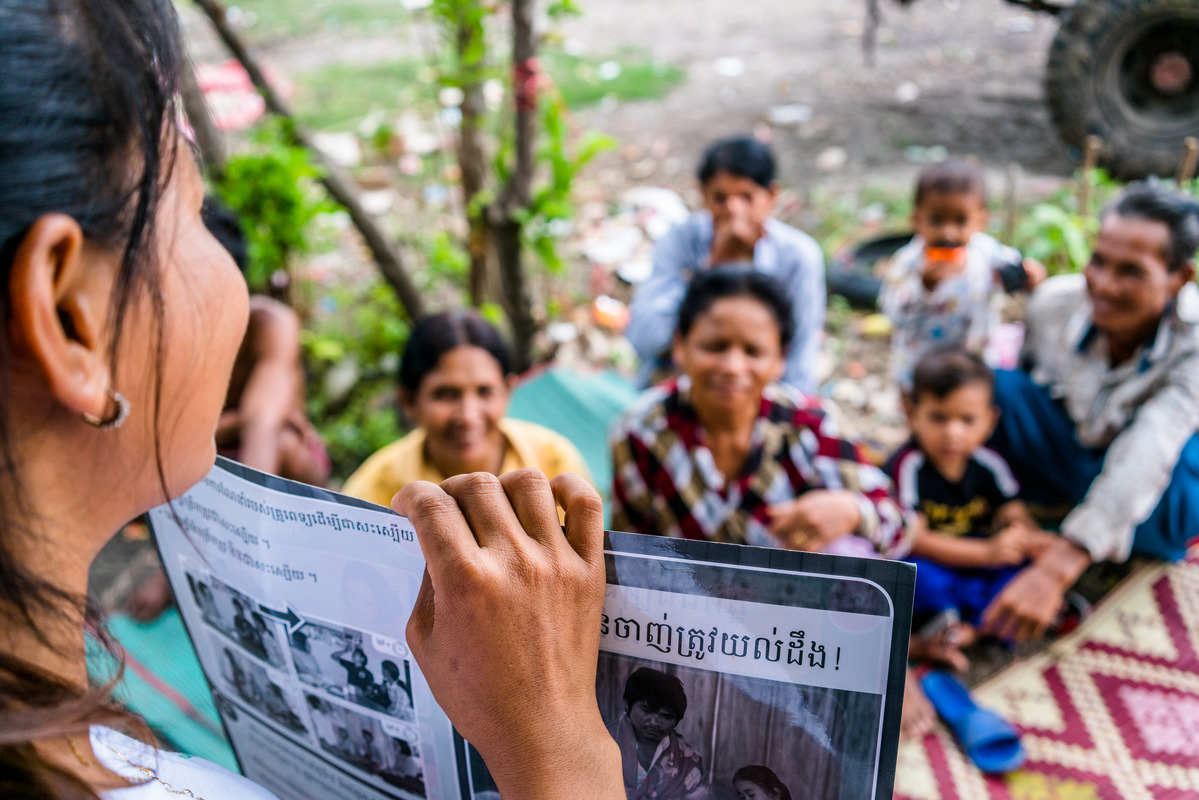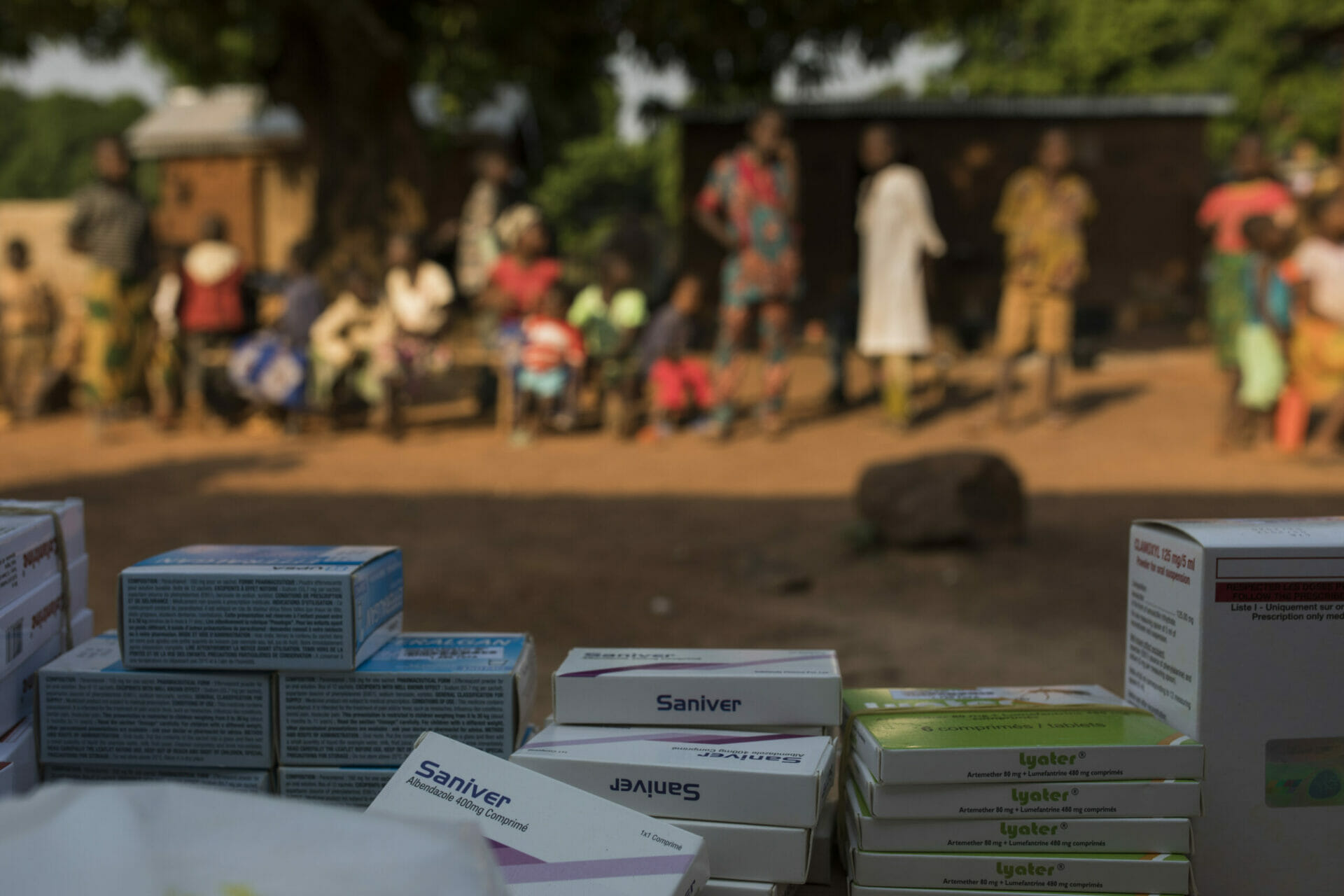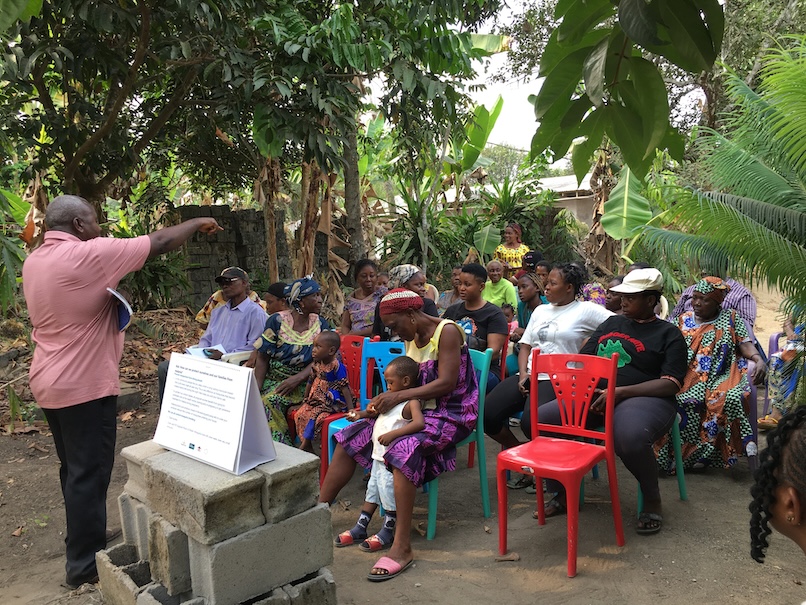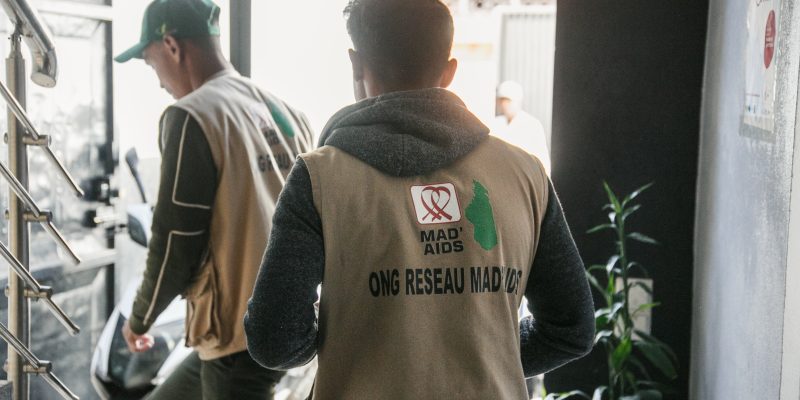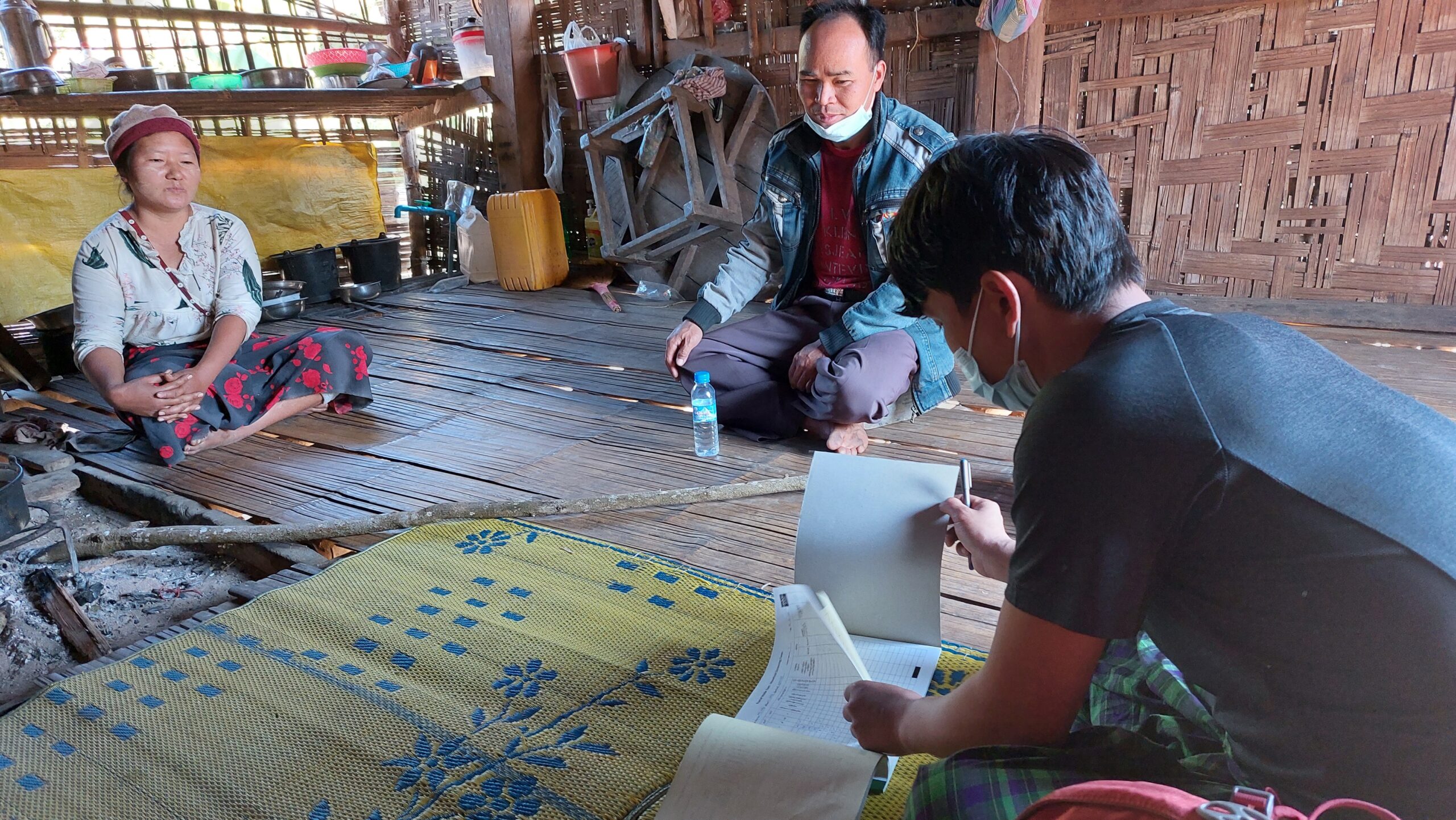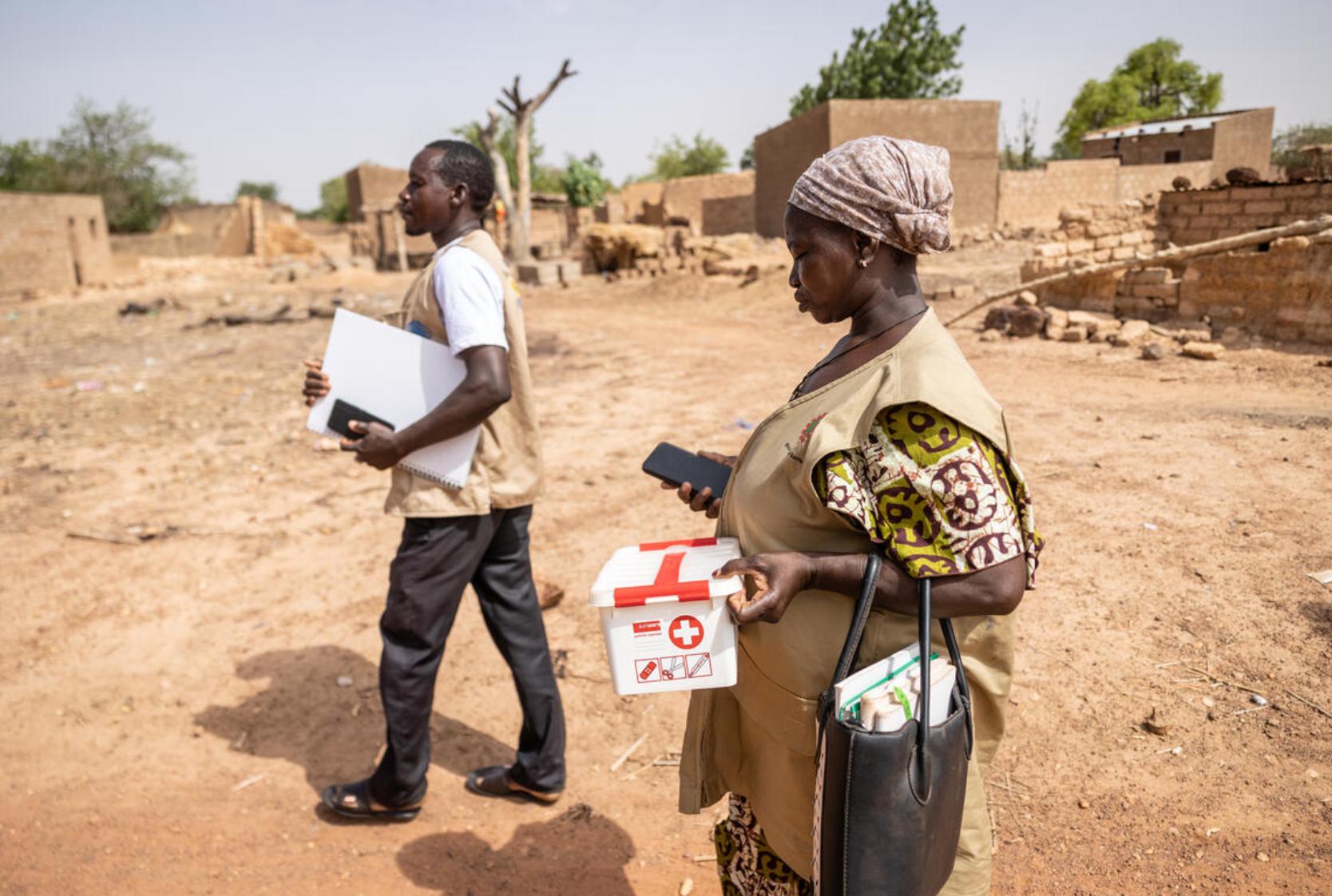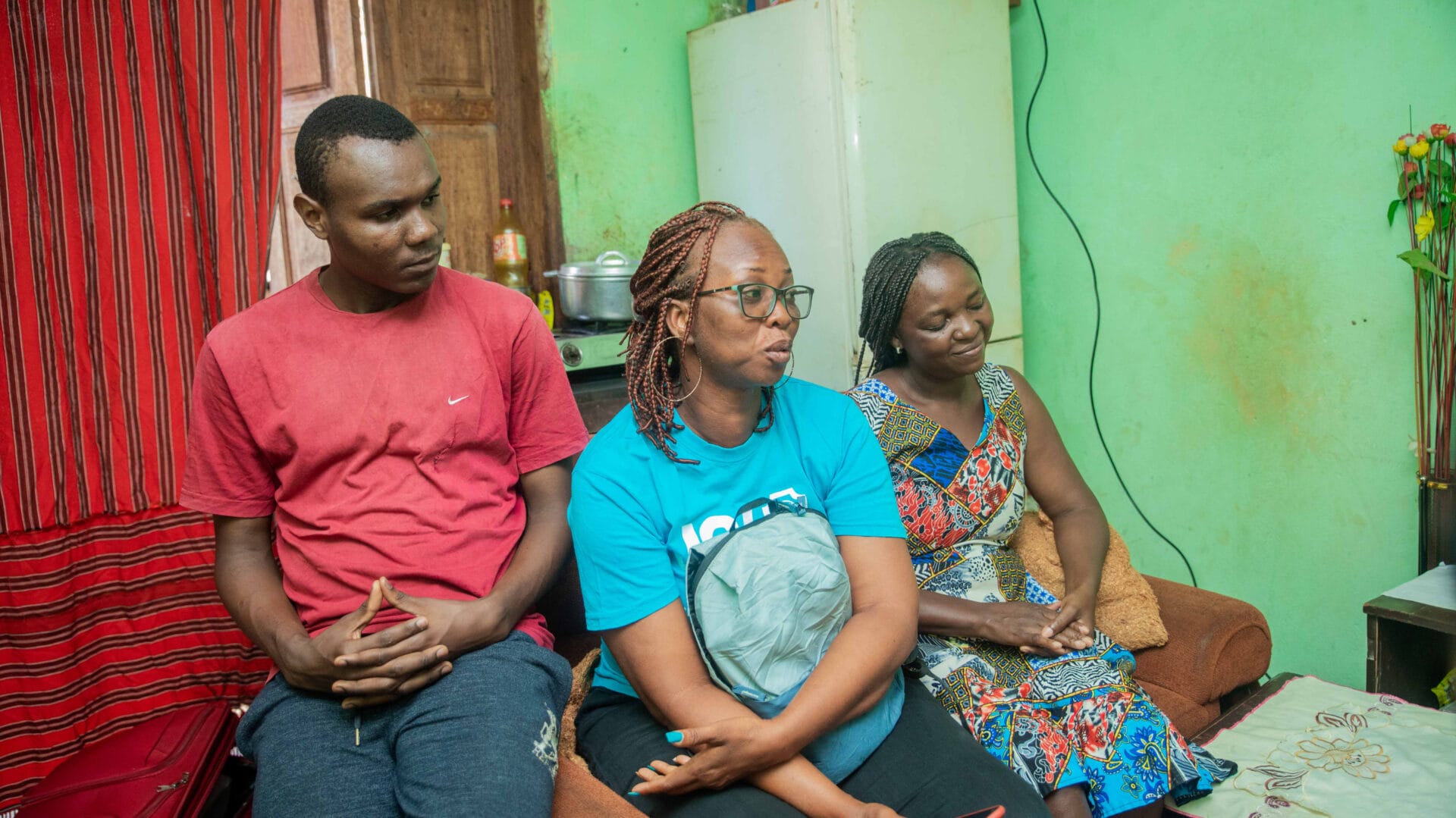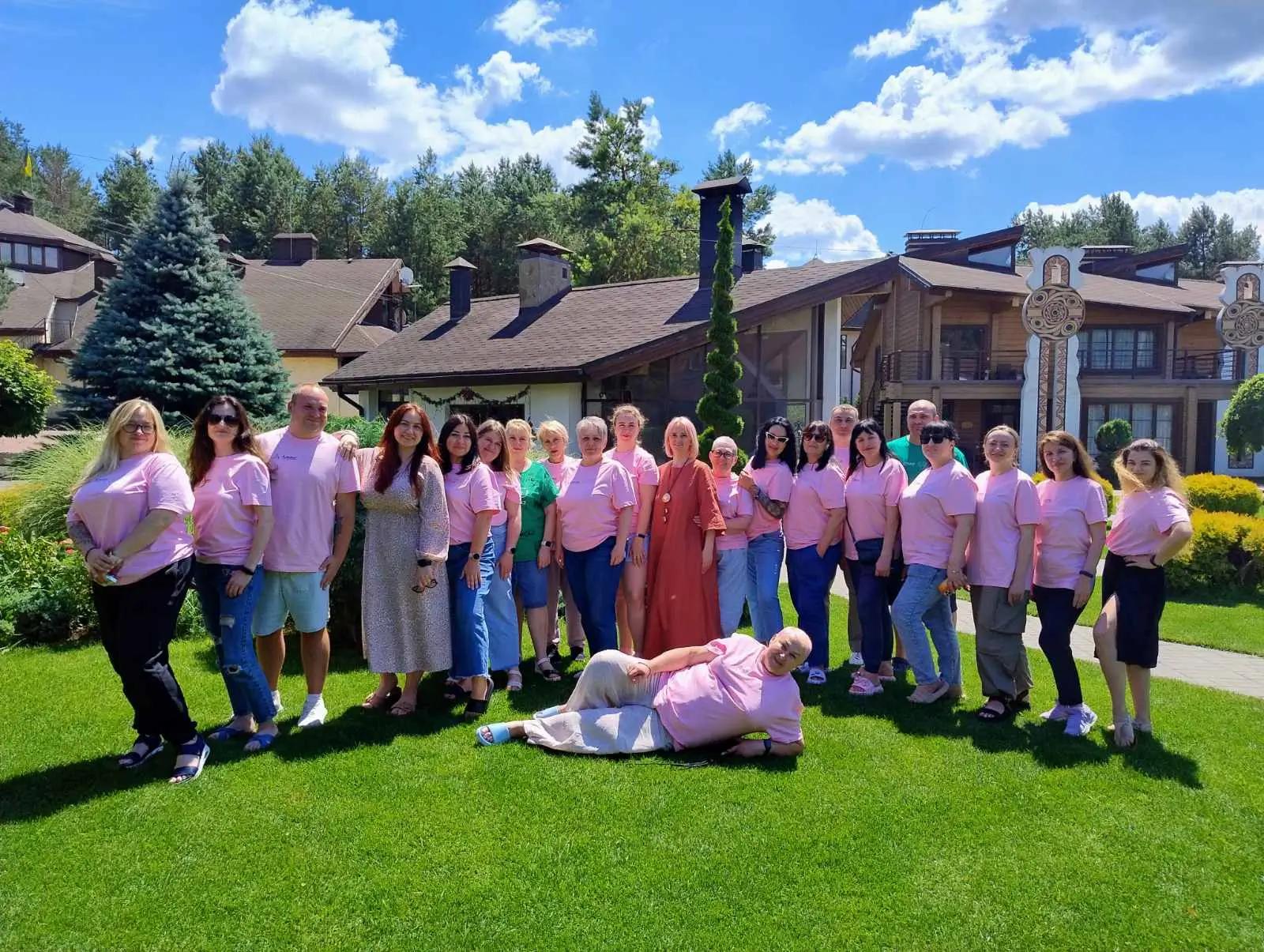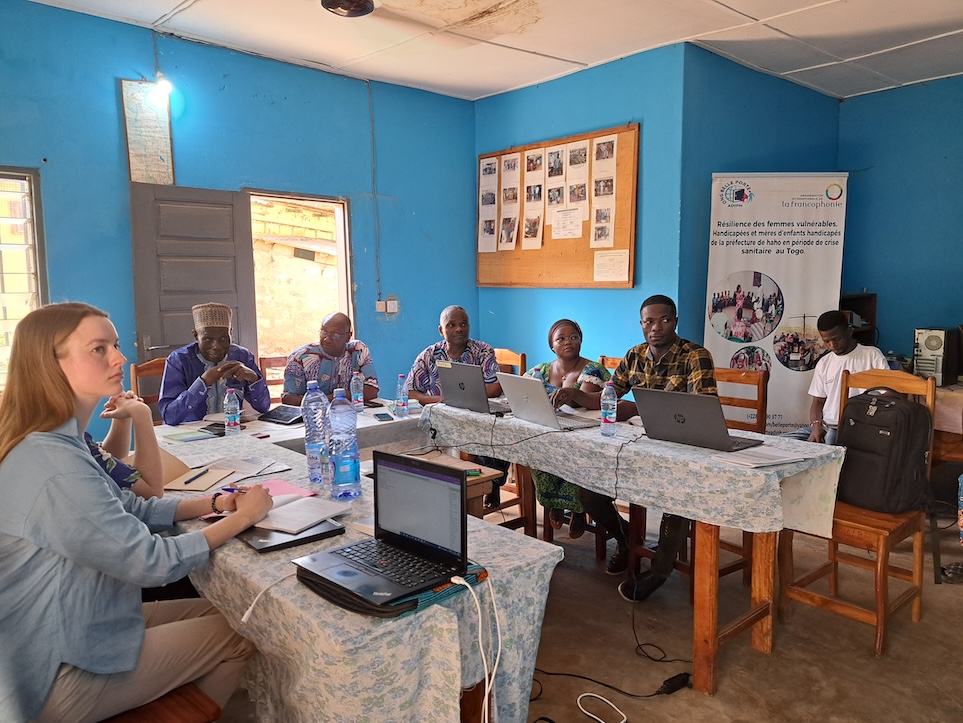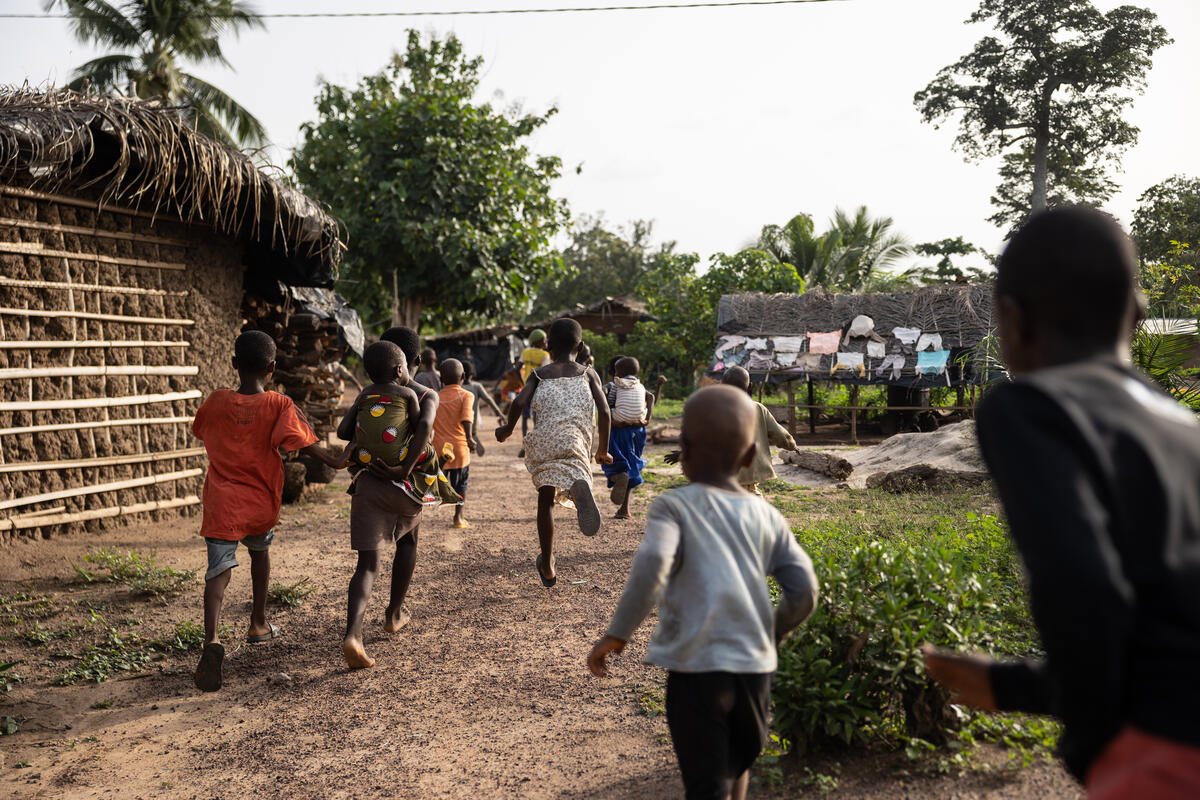Community observatories: citizen monitoring to improve access to health
Strengthening access to quality medicines and increasing transparency in the pharmaceutical sector are priority health issues in many countries where L’Initiative operates in French-speaking Africa.
Community observatories are an interesting solution to address these issues: the communities involved take part in the authorities’ alert system when malfunctions occur and allow the collection of field information on the state of the health system. Sabrina Petermann, from the Humanitarian Center for Pharmacy Professions (CHMP), and Hamidou Ouédraogo, from the Access to Essential Medicines Network (RAME), look back at the genesis and challenges of their observatory project.
How did this project of community observatories of pharmaceutical practices come about?
Sabrina Petermann. During a seminar organized by Expertise France. The CHMP field missions and our discussions with our partners, RAME in Burkina Faso and Positive Generation in Cameroon, had highlighted the need to strengthen the role of communities to improve access to pharmaceutical products. But the idea of creating community observatories emerged during this seminar. Significant collaborative work between our three organizations resulted in the Community Observatory of Pharmaceutical Products project, now called OCoPP.
Hamidou Ouédraogo. Our organizations already work with observatories and we therefore know how useful they are in improving the supply of medicines. We also participated in capitalization workshops organized by Expertise France, during which we were able to learn more about the strengths and weaknesses of existing observatories. We were thus able to better frame our observatory project in Burkina Faso and Cameroon.
“The community approach of the OCoPP project leads us to deploy at the peripheral level of the health pyramid, particularly in implementation, taking into account the communities, their representatives (who are the OBCs), without forgetting the health facilities of the different districts.”
Ms. Jodelle Kayo, OCoPP focal point at Positive-Generation
What are the major challenges that this project addresses?
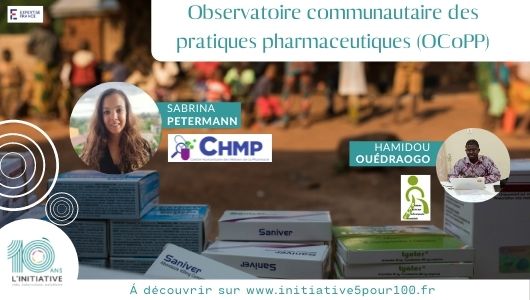
S. P. The first challenge is to ensure the relevance of the project in relation to the country’s various public health policies. In Cameroon, for example, community actors need to be valued, by being given broader prerogatives and benefiting from greater autonomy in relation to public health structures.
We will also implement an innovative tool, in the form of a digital application. It will be necessary to have it adopted by a population that is still not very accustomed to mobile health platforms.
H. O. Setting up an observatory also requires a transfer of skills to the benefit of the communities. The communities will manage primary care, dispense medicines and must regulate distributions to avoid stock shortages, mismanagement and fake medicines, for example. The project also serves to refocus community actors on their monitoring mission. They must not be simple service providers, but must strengthen their capacities in primary care.
What were the results of your situational analyses of the different sites?
H. O. We first identified the three sentinel sites that would host these community observatories. To ensure the proper implementation of alert and monitoring tools, we had to take stock of the communities’ capacities to organize themselves and take charge of the three key pathologies: HIV, malaria and tuberculosis.
S. P. This analysis has allowed us to note in particular that there is a real demand for training at the community level, in particular for the establishment of a “minimum package of pharmaceutical activities”. This would provide members of the observatories with the basis of standards on the resources needed to achieve the minimum objectives of stock management and dispensing.
The gender issue is increasingly integrated into development projects. How have you specifically integrated women into this project? And how is this important on the issue of health products?
S. P. It is true that it may seem surprising to talk about gender and medication. However, it is a central aspect to the proper functioning of the health system and access to medication. Since women – and their children – are the main beneficiaries of health structures, they must be placed at the heart of our project. Their needs must be a priority, whether it is contraceptives or other products intended for women.
H. O. In Burkina Faso, healthcare is free for pregnant women and children under five. The availability of pharmaceutical products for women must therefore be at the heart of our action. It is also women, above all, who attend health facilities. Putting women at the forefront allows them to speak out and thus promote better monitoring of the availability of the medicines they need .
